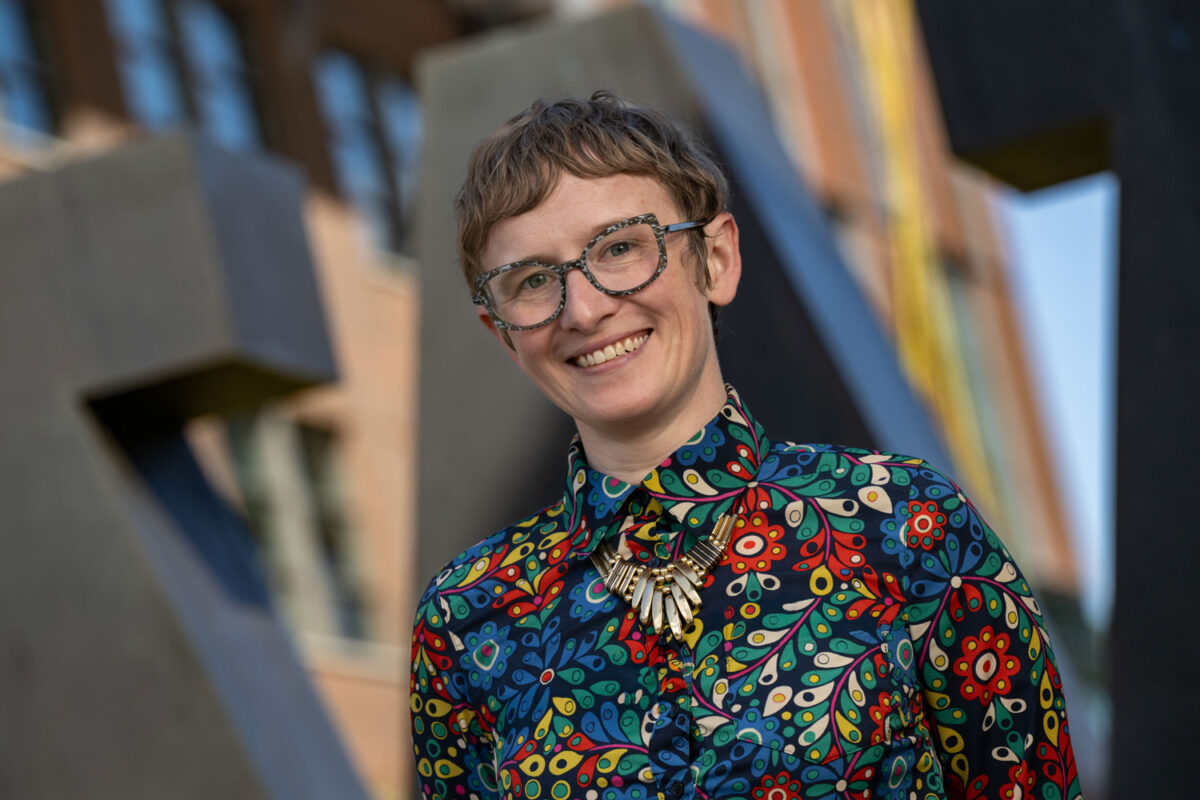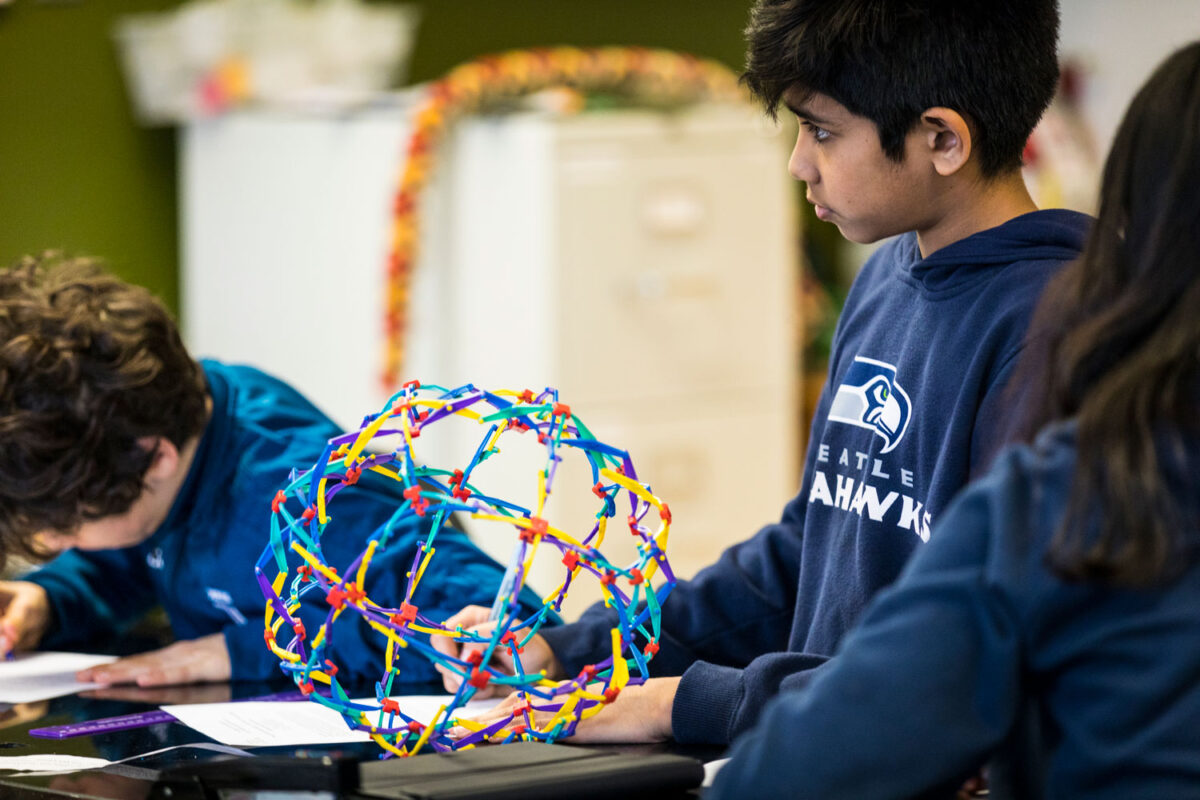Our Home in the Forest, a Discovery Core class at the University of Washington Bothell this autumn quarter, stretches the boundaries of what constitutes a classroom. Not content to study nature at a distance, the faculty leaders and their students went from learning in a typical 900-square-foot room with white walls and carpet flooring to a 326-acre forest, rich with opportunity.
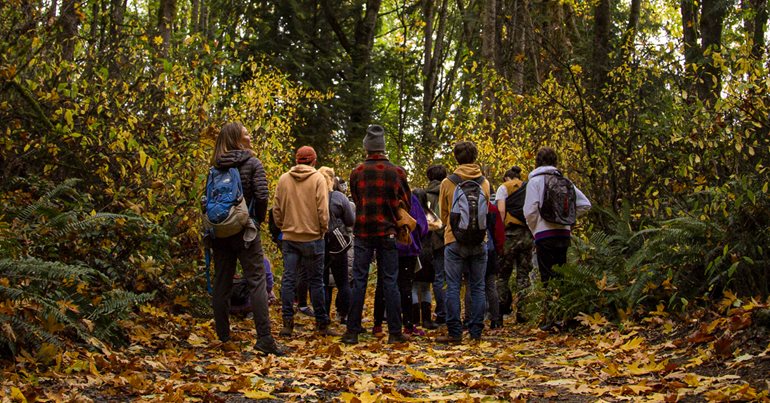
The students were able to learn at St. Edward State Park in Kenmore, Washington, because of a collaboration between UW Bothell, Washington State Parks, local legislators, community members and Daniels Real Estate. Together, they created the Environmental Education & Research Center (EERC), a University-led learning facility designed for the appreciation, study and stewardship of the Pacific Northwest ecosystem.
“The EERC provides students with a field station that is only six minutes away from campus,” said David Stokes, professor in the School of Interdisciplinary Arts & Sciences and co-teacher of the class. “The park itself has a spectacular forest — I believe it is the best in the Seattle metro area.”
Rain, but not on their parade
Our Home in the Forest, taught by Stokes and Jennifer Atkinson, associate teaching professor in the School of IAS, is the first class to be held at the EERC grounds. Due to construction delays, the class is using St. Edward State Park itself rather than the new building, which is expected to open in early 2022.
“The students haven’t shied away from being out in the rain,” Atkinson said. “In fact, we have had nearly perfect attendance this quarter — and this September to November has been the rainiest on record.”
First-year student Tejasvi Narayanan said having the class off campus and outdoors is what made it special. After spending her senior year of high school alone and on a computer screen, she was excited about the opportunity to learn in a completely different setting: in the woods with friends.
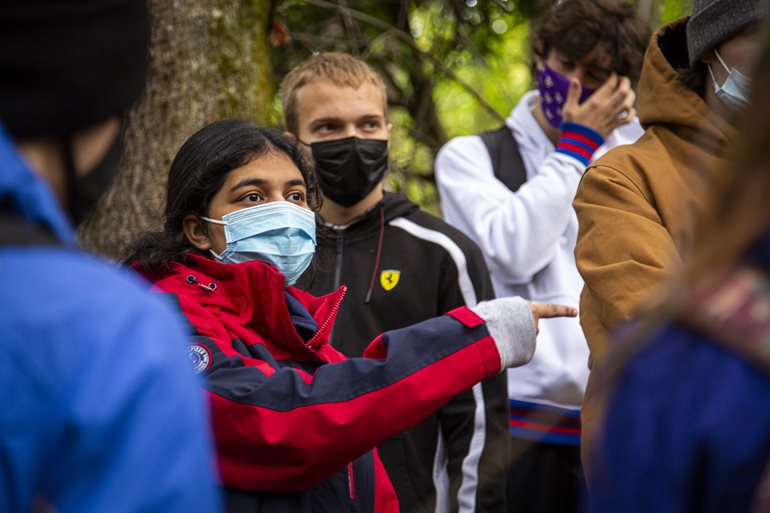
“This class was beyond my expectations. Not only did I go to class, but I also got to walk around the forest with classmates. That led to us having conversations we probably wouldn’t have had if we were just sitting at our desks, browsing on computers,” Narayanan said. “I have made really great friends whom I will have for the rest of college because of this class.”
A park with a purpose
Student Lee Donohue also testified to the impact that learning at St. Edward State Park has made on his education. Donohue, who aspires to have a career in forestry, said taking a class at a state park had quite an allure.
“I have never heard of a class like this before, let alone taken one,” he said. “I liked that I got to learn about ecology where it is most relevant, not in the classroom but in the forest. I didn’t have to imagine what the professors were talking about because I could see it in front of me, and that added so much to the experience.”
The curriculum, designed by Stokes and Atkinson, encouraged students to think about the value forests provide for humans, and in particular, how trees aid in climate regulation. For student Natasha Neely, that was life changing.
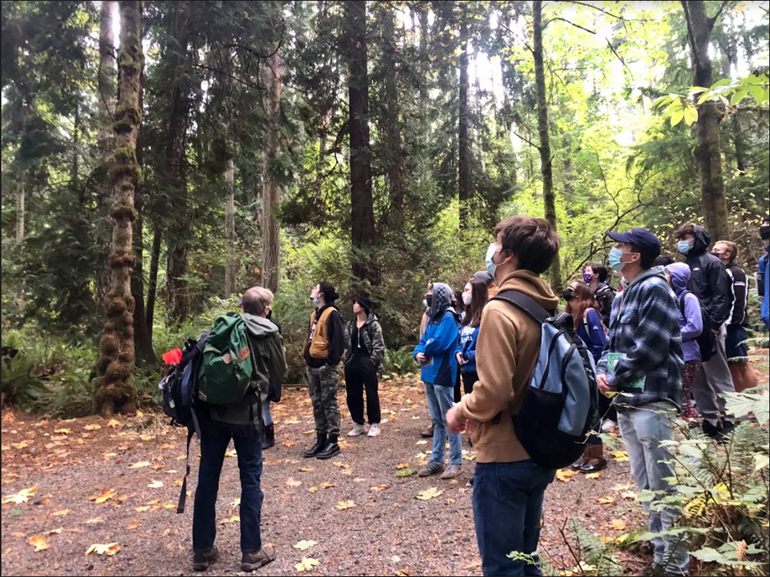
“What I learned reshaped my values. I don’t think it would have impacted me as much if I hadn’t been immersed in the beauty of nature while learning the material,” she said. “My dad jokes that I took one class about trees and became a tree hugger, but I don’t think that’s a bad thing.”
Neely has already begun looking at life differently because of what she learned while in the park. Having grown up in West Seattle, she was initially devastated to learn the city had just cut down a tree, but she found comfort knowing they left behind the stump.
“The dead wood is good for ecological succession, and that’s something I never would have thought about before,” she said. “It’s like I am seeing the world in a whole new light.”
Bobcats, weasels & black-tailed deer
The EERC has enhanced the learning of faculty, too.
In the spring 2021, the center and UW Bothell partnered with local community members to launch a camera study of wildlife in the Northshore area (Kenmore, Kirkland and Bothell).
Under Stokes’ direction, each “community scientist” places a motion-triggered camera strategically near their home. Then, they review the photos it collects. The team has documented bobcats, coyotes, black-tailed deer, long-tailed weasels and Douglas squirrels — among many other species.
Stokes explained that one of the most urgent needs for conserving wildlife in urban parks and protected areas such as St. Edward is gaining a better understanding of animals’ use of the surrounding land. A key goal is figuring out how they travel into and out of the parks, in addition to how they use the residential and natural areas around it.
“The hope is that this project can help educate the community about the diversity of wildlife that lives among us and about how we can better share our habitat with our non-human neighbors,” Stokes said.
“I look forward to continuing both research and teaching at the EERC.”


